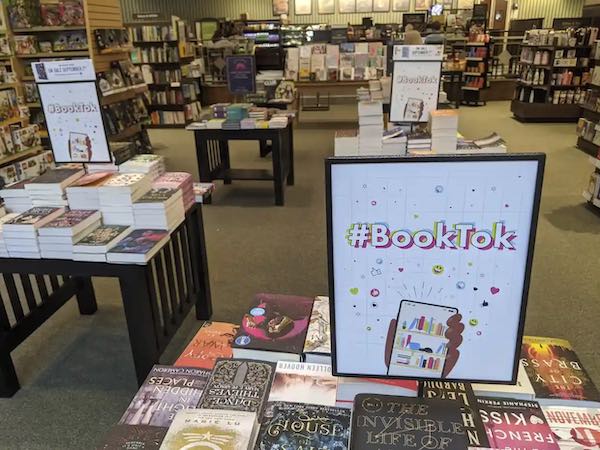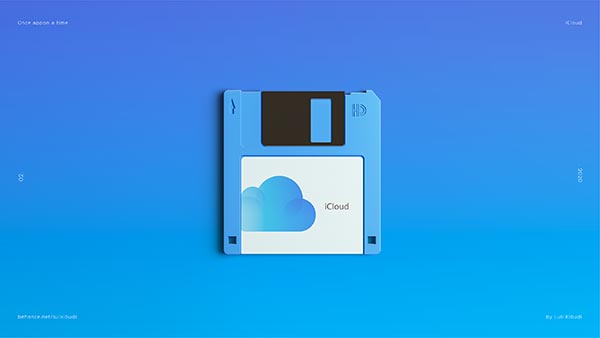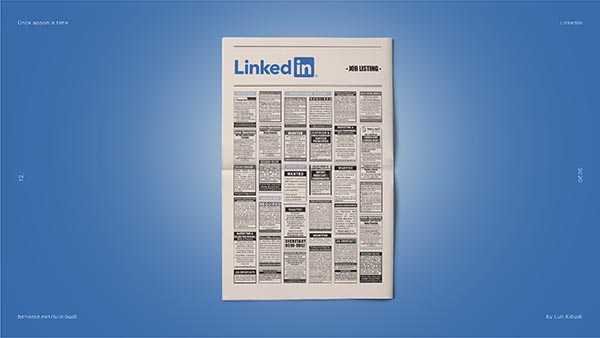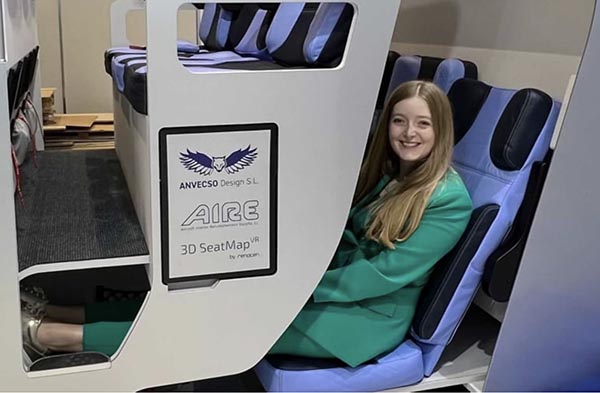Your Friday Medieval Cover of “House of the Rising Sun”
Repent, Harlequin! Said the BookTok Man
OK, that may be a bit obscure, but interestingly enough, the social media app TikTok is actually spurring a print book “revolution.” Says The Guardian, it is due to #Booktok:
a niche on the platform TikTok that became a social media sensation in the early months of Covid, and has been gathering momentum ever since. “We used to rely on millennials,” says the store’s 30-year-old manager, Peter. “But now the majority of our customers are teenagers, who have money and influence and want to find their own stories. A lot of black and Asian authors are coming through. I always wanted to have an LGBTQ section and now it wouldn’t make sense not to. It’s exciting. You can see publishing changing. It’s made it fun to come into work.”
This has driven young people into bricks-and-mortar bookstores like Waterstones and Barnes and Noble, which now has special #Booktok-inspired displays.

So what do these clips involve?
The BookTok aesthetic is fast and furious, with fans sobbing over plotlines or caressing their books in homemade clips set to music. @groovytas, a Toronto-based BookToker with 109,000 followers, knows all the tricks. “It’s the fact that she knew, no matter what he did, she’d still love him,” she recites, turning away with a despairing shrug, beneath the jacket image of a self-published romance called Addicted to You. In some videos, @groovytas teasingly holds the book she’s talking about upside down. In others, she hosts authors or muses about such crucial readerly issues as what it means to visualise a character. If you like her approach, you’ll be directed to similar creators, sucking you into a BookTok community.
Anything that drives an interest in and love of printed books is fine by us!
TBF
In this Throwback Friday, designer Luli Kibudi reinterprets modern online brands as their old-school forebears. Dubbed “Once Appon a Time,” the series reinterprets Spotify as a cassette tape, Netflix as a VHS tape, Gmail as an envelope, iCloud as a floppy disk, and so on.

It’s a good history lesson for those who are unaware of how we used to do things. We particularly like LinkedIn recast as an old newspaper help wanted section.

It Was 100 Years Ago
Yesterday was Bloomsday, the annual celebration of the life and works of Irish author James Joyce. (The events of his novel Ulysses all take place on a single day—June 16, 1904.) This year is especially poignant as 2022 marks the 100th anniversary of the publication of Ulysses.
The centenary is also being commemorated with a new play being staged in Ireland based in the 1933 Ulysses obscenity trial that ultimately vindicated the book after it had been banned in 1920. The United States v Ulysses, by Colin Murphy,was at the Pavilion Theater in Dún Laoghaire, and was the first public performance of the play, “which draws on case files, other historical documents and Set at Random, a novel by Declan Dunne about the trial.”
Paper Laptop
Back in the late 90s/early 00s, E Ink’s electrophoretic “e-paper” displays were all the rage, and helped kick off the ebook/ereader market when the first generation Kindle used an e-paper screen. The advent of the iPad and LCD screens—which could display color long before e-paper could—caused a shift away from e-paper. Which is kind of a shame, as e-paper, being a reflective rather than transmissive display, is easier on the eyes, is readable in bright sunlight, and is more analogous to reading on real paper. It also uses much less power than an LCD or other display.
We were intrigued to read about a new laptop from a company called Modos that actually has an e-paper screen. Says Gizmodo:
The Paper Laptop, as it’s simply called, will forego an LCD or OLED screen for a large electronic paper display. The team hopes to bring the benefits of e-readers—like great battery life, less eye fatigue, and better visibility in bright sunlight—to portable computers. As much as gamers may balk at the idea of being limited to a monochromatic black and white display (Modos hasn’t made any mention of adopting the color e-paper displays that are slowly trickling out onto consumer-ready devices) the reality is that the majority of laptop users mostly use their devices for e-mail, spreadsheets, word processing, and other text-focused tasks, where e-paper excels.
It’s still in the prototype stage, and while surfing the Web or giving PowerPoint presentations would be decidedly retro—and you probably wouldn’t use this for graphic design or color management—it would be a nice option for someone who, as they say, is just using Word, Excel, or email.
Skin Tight
Do you like leather but are worried about the sustainability of cow (or large-mammal-based) leather? Why not try fish leather—which actually has an environmental benefit. Via The Guardian, it was the brainchild of Aarav Chavda, an avid Florida diver who bemoaned the decrease in the numbers and diversity of fish and coral reefs, largely due to the invasive lionfish, which is capable of “devouring an estimated 79% of young marine life within five weeks of entering a coral reef system.” So Chavda—and a team of other fellow SCUBA enthusiasts, decided that, when life gives you lionfish, you make leather, So they established Inversa, a company that uses lionfish skin to make leather goods.
They process the fish hides by tanning them with drying agents and dye them before selling the leather to partner companies to fashion into high-end products including wallets, belts and handbags. Fish skin is thin but because the fibre structure runs crossways, it is stronger than many other types of leather… Each hide, Chavda says, can save up to 70,000 native reef fish.
It’s more sustainable than cow leather, since the fish don’t need huge amounts of pasture for grazing and don’t produce the greenhouse gases that cows do.
Inversa does not hunt the lionfish itself. Instead, it relies on educating and encouraging largely poor fishermen and women in often remote places to catch them.
The downside to this is that it keeps these fishermen from going after more lucrative seafood like lobster. But Inversa is working on that problem, as well.
We can envision a biker gang togged out in lionfish leather—Hell’s Angelfish, perhaps?
“Gimme a Head with Graphene…Long Beautiful Graphene!”
Was it a good week for graphene news? It’s always a good week for graphene news! Researchers from China’s Donghua University are using graphene oxide to make wigs more durable and longer lasting. From Graphene-Info:
Hairpieces can be made of real human strands or synthetic materials, but either way, washing, UV exposure from the sun and repeated styling can cause these products to become dry and brittle. To extend the life of wigs, researchers have spray-coated a layer of graphene oxide on them, whereas other teams have immersed wigs in a keratin/halloysite nanocomposite. Since it's difficult to cover an entire hairpiece with these methods, the team wanted to see if a nanocomposite applied with a tried-and-true approach for coating surfaces with ultrathin films - known as the Langmuir-Blodgett (LB) technique - could improve coverage and increase durability.
… Compared to the immersion technique, the LB method provided more coverage. In addition, hairs treated with the LB approach sustained less UV damage, were less prone to breakage and could hold more moisture than those that were simply immersed in the nanocomposite. They also dissipated heat better and generated less static electricity when rubbed with a rubber sheet. The researchers say that the method can be scaled up for use by companies that manufacture wigs.
Legging It
Here’s a great way to turn any object in your home into something kind of creepy: add robotic insect legs. Via Core77:
A Japanese engineer and dad who goes by “Ianius” on Twitter has an unusual hobby: Adding robotic spider legs to household objects. “I want to live in a convenient and enjoyable house full of furniture and home appliances that move and help people,” he said in an interview with HuffPost Japan.
??????????????????????????????? pic.twitter.com/Jy3egWEQ5c
— lanius (@lanius) November 24, 2021
With only six legs, it’s technically not a spider, but we get the analogy. The walking nightlight is a pretty cool idea, although encountering it late at night might be a little disturbing.
??????????????????????????????????????? pic.twitter.com/JMr5dkCqtJ
— lanius (@lanius) June 5, 2022
Midnight Sun
Here’s an interesting idea for effective harvesting of solar energy: satellites continuously collect light from the sun, convert it to electricity using photovoltaic cells, and then beam it back to Earth-based receivers as microwaves. This way, you can collect photons 24/7 rain or shine, since in space in geostationary orbit, it’s always shine. It’s a cool idea and it’s not necessarily science-fiction—or even all that new, having been proposed in the 1960s by scientist Peter Glaser. This is not to say that there are hurdles, such as the cost of building the satellites and space-based solar collectors. But, as per Gizmodo, researchers in China are one step closer to such a system:
Researchers at Xidian University ran a successful test of the “world’s first full-link and full-system solar power plant” on June 5, according to a translated statement published today by the university. The plant is a 246-foot-tall (75-meter) steel structure located on Xidian University’s southern campus, and it’s equipped with five different subsystems meant to foster the eventual development of space-based solar power arrays.
… The newly built ground station is a part of the team’s space-based solar power proposal called OMEGA, which stands for Orb-Shape Membrane Energy Gathering Array. Once built and parked in geostationary orbit, OMEGA will collect energy from the Sun, convert it to electrical energy, and transmit it to Earth as microwaves via antenna.
Another hitch is transmitting electricity as microwaves: “the researchers were successful in transmitting energy wirelessly as microwaves over a distance of approximately 180 feet (55 meters).” Not quite as far as Earth’s orbit…but it’s a start.
The researchers admit that achieving OMEGA’s promise could literally be generations away, it’s still one step down the right road.
Waiting for the Worms
Here’s a new term to add to your animal lexicon: superworm. As Scientific American explains, “superworms” are not really worms per se, but rather Zophobas morio beetle larvae beetle larva, having been given their moniker due to their relatively large size. But the important thing about them is that they can eat polystyrene and digest it—and even derive some nutrition from it. Chalk this up to the larvae’s gut bacteria.
The researchers have found that these superworms can survive on a diet of nothing but polystyrene, which is used in a vast array of products, ranging from cups to packing peanuts. The worms’ ability to process the plastic suggests it is very efficiently broken down in the creatures’ digestive tract. “They are basically like eating machines,” says Rinke, who works at the University of Queensland in Australia and co-authored a new study describing his team’s findings, published on Thursday in Microbial Genomics.
They divided a set of superworms into three groups: one they fed nothing but wheat bran, one they fed nothing but polystyrene, and the third control group they fed nothing.
The bran-fed larvae were significantly healthier than their plastic-fed or starved counterparts, more than doubling their weight over the three weeks they were monitored. After that, some of the worms from each group were set aside to grow into beetles. Nine out of 10 bran-fed worms successfully grew into beetles and maintained the most diverse gut microbiome of all three groups. The plastic-fed larvae made less impressive gains—but they still put on more weight than the starved worms, and two thirds of them grew into beetles. Clearly polystyrene is a poor diet for the larvae, Rinke says. But it seems they can extract at least some energy from the material.
Why is this important? Not that anyone is suggesting using beetle larvae to help rid us of all the plastic waste we generate, but understanding how the superworms’ gut bacteria break down the plastic can direct future research.
The worm essentially shreds the plastic so the bacteria can biodegrade it and break it down into smaller molecules that may be more easily digestible—or possibly could one day be upcycled to create new plastic, Rinke says. Knowing exactly which bacterial enzymes these gut microbes use to break down the polystyrene is the golden ticket to replicating the process on a large scale in the future.
The Ballad of John Szczecina
Now, we have on occasion messed up a decimal place, but it has never been as costly as it was for one gas station manager—or, should we say, former gas station manager. From USA Today:
former gas station manager John Szczecina says he unintentionally put the decimal in the wrong spot and listed gas at 69 cents instead of $6.99 at a Rancho Cordova gas station.
…The mistake cost the gas station $16,000 after people shared the price on social media and lines started to form at gas pumps, according to the outlet.
Sure, the guy got fired, but we suspect he’s become something of a local folk hero, in a Firefly/Jaynestown kind of way.
Plane Horrible
Well, if this is the future of air travel, we may all join Frank on Amtrak. From CNN:
Flying economy for any extended period of time is an experience usually endured rather than enjoyed, but one airplane seat designer reckons his design could revolutionize budget travel.
If by “revolutionize” they mean “make it even more uncomfortable and awful,” then yes.
Alejandro Núñez Vicente’s Chaise Longue Airplane Seat concept started small scale last year, as a college project for the then 21-year-old. A nomination in the 2021 Crystal Cabin Awards -- a top prize in the aviation industry -- swiftly followed, and the design became the focus of a flurry of online attention following a CNN Travel article.

If you’re claustrophobic or not sanguine about being at butt-level with the person sitting in front on top of you, you will certainly want to splurge for the upper seat—and we can only imagine what the price differential in tickets is going to be.
“My purpose here is to change the economy class seats for the better of humanity, or for all the people that cannot afford to pay for more expensive tickets,” he says.
It’s kind of sweet that he thinks airlines wouldn’t charge a premium to be on the top.
Dog Napping
Have you ever looked at your pet’s dog bed and thought, “I want one of those”? No, we haven’t either. But dang if the Plufl—a dog bed designed for humans (yeah, let’s handwave the semantics here)—doesn’t look jolly comfortable:

Inspired by the classic dog bed, the Plufl is designed to alleviate stress and anxiety by providing a space where you can rest, recharge, and rejuvenate.
- Features Include:A Soft Thick Pillow Border
- A Luxurious Faux Fur Cover
- Tuck your Hands and Feet
- Oval Shape Cradles you into Natural Fetal Position
Some days, a fetal position is our default position…
Call us crazy, but we may get one of these for the Around the Web Cultural Accretion Bunker.
Now this would be a better idea for an airplane seat.
This Week in Printing, Publishing, and Media History
June 13
1865: Irish poet and playwright W. B. Yeats born.
1971: The New York Times begins publication of The Pentagon Papers.
1983: Pioneer 10 becomes the first man-made object to leave the central Solar System when it passes beyond the orbit of Neptune.
June 14
1618: Joris Veseler prints the first Dutch newspaper Courante uyt Italien, Duytslandt, &c. in Amsterdam (approximate date).
1822: Charles Babbage proposes a difference engine in a paper to the Royal Astronomical Society.
1933: Polish-American novelist and screenwriter Jerzy Kosi?ski born.
1936: English essayist, poet, playwright, and novelist G. K. Chesterton dies (b. 1874).
1951: UNIVAC I is dedicated by the U.S. Census Bureau.
1966: The Vatican announces the abolition of the Index Librorum Prohibitorum (“index of prohibited books”), which was originally instituted in 1557.
June 15
1752: Benjamin Franklin proves that lightning is electricity.
1878: To settle a bet, Eadweard Muybridge takes a series of photographs to prove that all four of a horse’s hooves leave the ground when it runs. The results become the basis of motion pictures.
June 16
1903: The Ford Motor Company is incorporated.
1904: Irish author James Joyce begins a relationship with Nora Barnacle and subsequently uses the date to set the actions for his novel Ulysses; this date is now traditionally celebrated as “Bloomsday.”
1911: IBM is founded as the Computing-Tabulating-Recording Company in Endicott, N.Y.
1917: American publisher Katharine Graham born.
June 17
1882: Russian pianist, composer, and conductor Igor Stravinsky born.
1898: Dutch illustrator M. C. Escher born.
1901: The College Board introduces its first standardized test, the forerunner to the SAT.
June 18
1466: Italian printer Ottaviano Petrucci born.
1812: Russian author and critic Ivan Goncharov born.
1854: American publisher and founder of the E. W. Scripps Company E. W. Scripps born.
1858: Charles Darwin receives a paper from Alfred Russel Wallace that draws eerily identical conclusions about evolution as Darwin had been developing. Darwin thus races to publish his own conclusions.
1942: Paul McCartney born.
1948: Columbia Records introduces the long-playing (LP) record, which, curiously, is seeing a bit of a renaissance today as a medium for delivering music.
June 19
1623: French mathematician and physicist Blaise Pascal born.
1846: The first officially recorded, organized baseball game is played under Alexander Cartwright’s rules on Hoboken, N.J.’s Elysian Fields with the New York Base Ball Club defeating the Knickerbockers 23–1.
1897: American comedian Moe Howard born.
1934: The Communications Act of 1934 establishes the Federal Communications Commission (FCC).
1947: Indian-English novelist and essayist Salman Rushdie born.
1948: English singer-songwriter Nick Drake born.
1978: Garfield, holder of the Guinness World Record for the world’s most widely syndicated comic strip, makes its debut.
2018: The 10,000,000th United States Patent is issued (“Coherent Ladar Using Intra-Pixel Quadrature Detection,” assigned to Raytheon Company).















Discussion
Only verified members can comment.